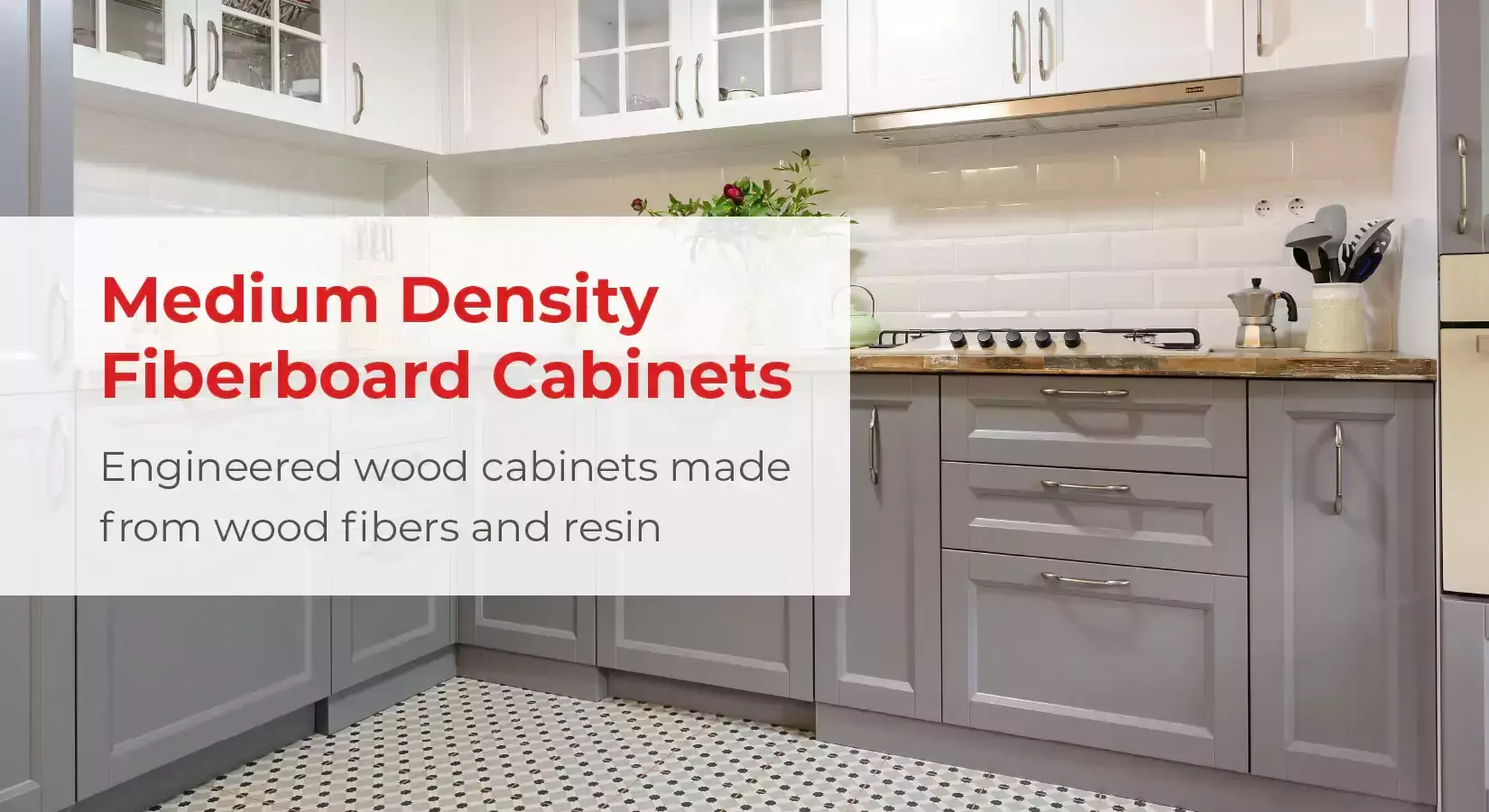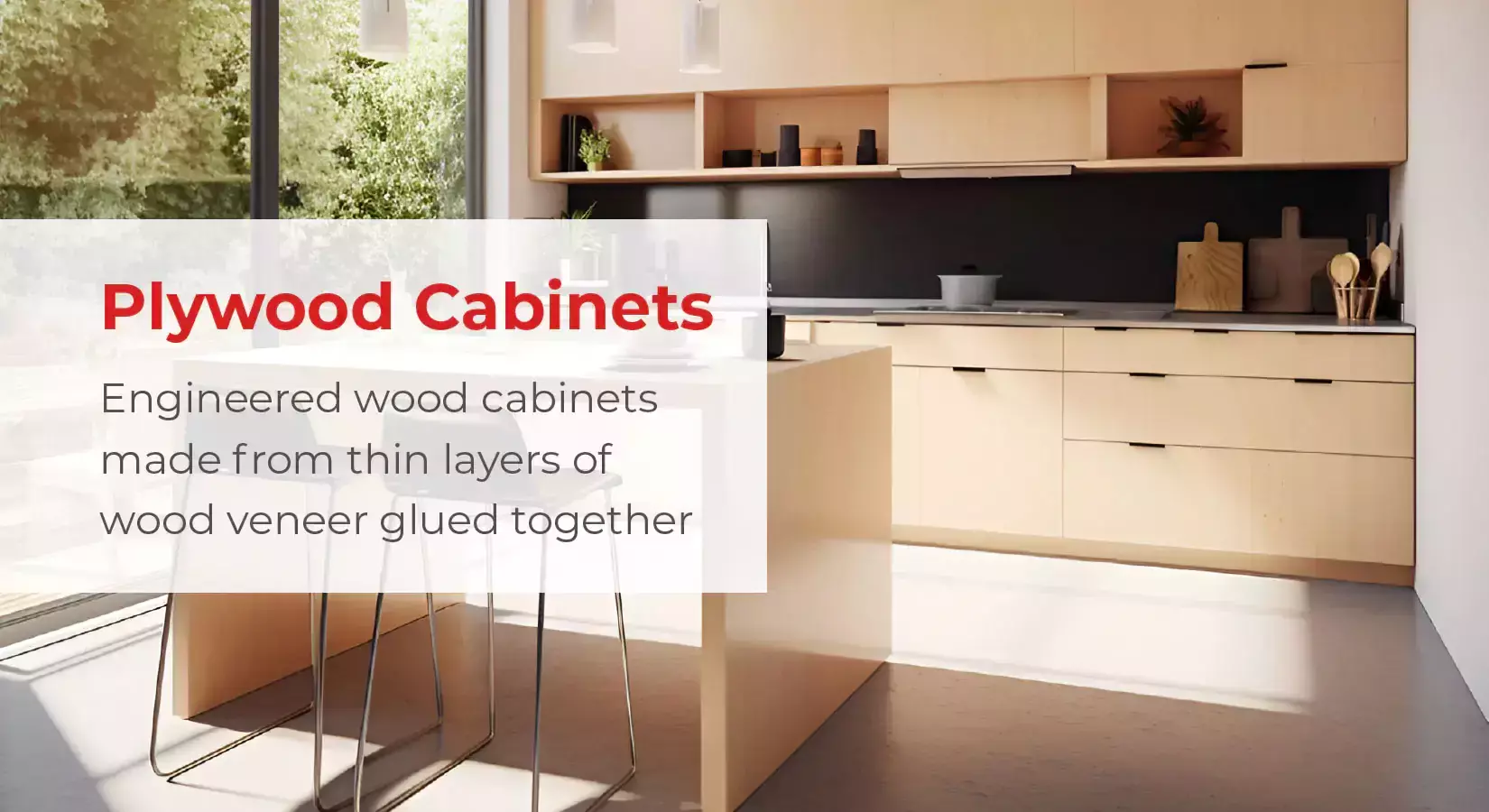If you're planning a kitchen remodel, one of the most important decisions you'll make is choosing the right cabinet material. MDF and plywood are two popular options, each with their own unique qualities. In this article, we'll explore the differences between MDF and plywood cabinets to help you make an informed decision.
MDF vs. Plywood Cabinets: What Sets Them Apart?
MDF (Medium-Density Fiberboard) cabinets are made by combining hardwood and softwood fibers with resin under high temperature and pressure. This results in a uniform wood material with no visible grain pattern. On the other hand, plywood is constructed by gluing thin layers of wood veneer together, with the grains alternating.
 Image: MDF cabinets
Image: MDF cabinets
Medium-Density Fiberboard (MDF) Cabinets: Affordable and Versatile
MDF cabinets are highly regarded for their affordability and consistent quality. Their smooth surface makes them ideal for paint, veneer, or laminate, allowing for a seamless finish. The lack of grain also makes MDF a great material for cabinet designs requiring complex curves and cuts, as the edges are less likely to catch and fray over time.
Plywood Cabinets: Strength and Durability
Plywood cabinets are known for their strength, stability, and durability. They have excellent load-bearing capacity and can withstand heavy loads without easily bending or breaking. Plywood's natural wood grain appearance lends itself well to projects where a more organic and traditional look is desired, such as stained cabinetry.
 Image: Plywood cabinets
Image: Plywood cabinets
Physical Qualities: Smoothness vs. Natural Wood Grain
MDF cabinets have a smooth, consistent surface with no visible wood grain. This makes them perfect for painting. However, staining MDF cabinets may not give the desired result as the material is not very moisture-resistant and may soak up the stain, leading to warping. On the other hand, plywood cabinets display a visible wood pattern, adding an organic element to any project. Plywood cabinets take well to stain and can be painted with some additional steps, like sanding and finishing the edges.
Strength and Durability: Plywood Takes the Lead
When it comes to strength and durability, plywood cabinets have the upper hand. While MDF cabinets are sturdy, they lack the structural integrity of plywood. MDF is more susceptible to moisture damage, putting it at risk of warping, swelling, or even disintegrating. Plywood's cross-laminated construction creates a strong and resilient material, ideal for kitchen cabinets. Plywood cabinets are also more water-resistant than natural wood and MDF cabinets, helping them avoid warping, twisting, and shrinking.
Workability and Installation: Choose Based on Your Needs
MDF and plywood are both highly workable cabinet materials, but each excels in different areas. MDF is perfect for cabinets that require complex cuts, intricate designs, or detailed work, thanks to its consistent composition. It cuts smoothly, resulting in precise and clean edges. However, it does produce a lot of sawdust, so it's best to work with it in well-ventilated areas. Plywood, on the other hand, doesn't perform as well for complex cuts and may splinter at the edges. However, it's easier to use screws with plywood cabinets, as they provide good screw-holding strength. Plywood cabinets are also lighter than MDF cabinets, making transportation and installation more manageable.
Environmental Impact: Both Have Their Advantages
Both MDF and plywood cabinets are more environmentally friendly than cabinets made from solid wood. MDF cabinets reduce waste and do not contribute to deforestation since they are made from recycled materials. However, the resin used in MDF may contain formaldehyde-based binders, which can emit low levels of volatile organic compounds (VOCs) into the air. This can be mitigated by using low-emission or formaldehyde-free MDF cabinets. On the other hand, plywood cabinets require less wood than solid wood cabinets, as they are made from thin wood veneers. Old plywood cabinets can also be recycled and reused for other purposes. Similar to MDF, plywood's environmental impact depends on the adhesives used during production. There are formaldehyde-free and low-VOC plywood cabinet options available, making them a more sustainable choice.
Price: Consider Your Budget
In terms of price, MDF cabinets tend to be more affordable than plywood cabinets. The cost difference can range anywhere from 10-15%, making MDF a budget-friendly option for homeowners looking for versatile and cost-efficient kitchen cabinets. Plywood cabinet prices vary depending on factors like grade, type of wood veneer, and specific manufacturing processes used. Cabinets made from higher-grade plywood are typically more expensive, but they're a valuable investment for their strength and durability.
MDF vs. Plywood Cabinets FAQs
Still not sure which material is right for you? Here are answers to some frequently asked questions to help you make your decision:
Why use MDF instead of plywood for cabinets?
MDF performs better than plywood for cabinets requiring painting or adding custom embellishments or curves. It is also a more cost-effective choice for those on a budget.
Which is better, plywood or MDF?
The answer depends on your project's specific needs. Plywood is superior in terms of durability, making it an ideal investment for cabinets. MDF, on the other hand, is more affordable and provides a smoother surface for painting and veneering.
Are plywood cabinets stronger than solid wood?
While plywood cabinets are not as strong as cabinets made from solid wood, they are still a durable choice at a fraction of the cost.
When choosing cabinet materials for your kitchen remodel, it's essential to consider factors such as appearance, durability, workability, environmental impact, and budget. Our team of NKBA-certified designers can assist you in making the right choice that matches your vision and budget. Contact us today to get started!












